Luxor held the most spectacular sights of our trip to Egypt. I think it is a must-visit for any Egyptian itinerary. The week we spent there was probably a bit too long, even with balancing work with sightseeing (especially because we had internet issues there). But it was well worth it to see the amazing sights we saw.
Overnight Train and Arrival
The overnight train is a popular choice for many tourists heading south to Upper Egypt, but I’d planned to skip it because the cost was about the same as a 1-hour flight. However, the flights available at the time I looked (about two months before our trip) were either earling morning or late evening. So the overnight train seemed like a better choice, especially because we’d be taking the train back from Alexandria that afternoon so we could just stay at the train station. I gave us a 3.5-hour window just in case the Alexandria train was late. But that one was right on time, while the overnight train ended up being about 90 minutes delayed. Still, overall it was a very smooth experience.
During our “layover” we had dinner in the cafe at the train station, including the best shish taouk (grilled chicken) we had in Egypt (a dish we ordered multiple times in multiple places). It was a comfortable place to spend the time and had outlets so we could make sure our phones were charged up before the train. This was a smart move because we didn’t find an outlet in our sleeping car.
Finally we boarded the train around 8:30 p.m. Thanks to reading a few blogs, I knew to ask the attendant to put down our lower bed as soon as he had time and told him we wouldn’t want any dinner. It is included in the ticket price but I’ve heard isn’t that good and of course we’d already eaten. Our room was prepped before the train pulled out of the station and we had a nice time chatting and sipping the Egyptian ouzo we’d packed along. We both got a good night’s sleep on the train. The only downside of the train trip was the bathrooms (shared by all the people in our car) were more rustic than I prefer.




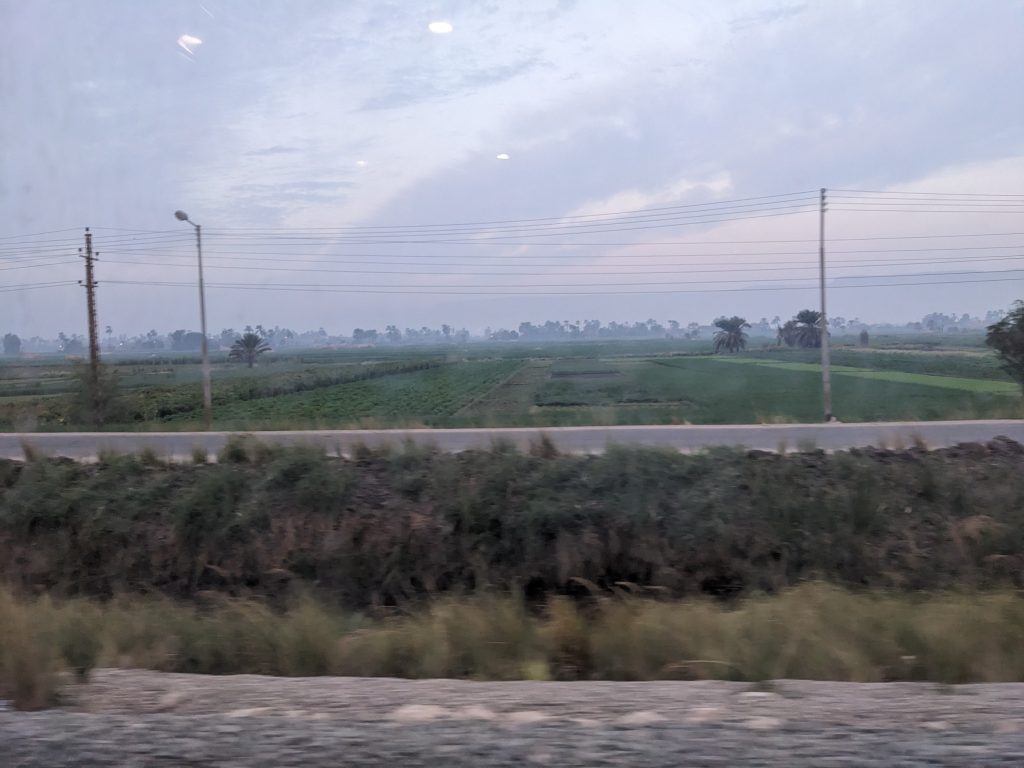
Arriving in Luxor we were greeted by even more aggressive Egyptians than we’d experienced in Giza. While dealing with our luggage on the stairs a man took over one of our suitcases and I resigned myself to tipping him. However, what he really wanted was to be our taxi driver. I didn’t really want to give him the fare after he’d been so persistent despite our repeatedly telling him “no” and “la shukran” (Arabic for “no thank you”) but it became easier to give in so we negotiated a rate to take us to the public ferry. Once in the car he offered to take us to our hotel on the West Bank for a very fair price ($10) but our Airbnb host had said taking the ferry is much better and it seemed silly to do a 45-minute car ride when we could cross in 5 minutes by ferry. Dealing with our suitcases getting on and off the ferry and walking through the dirt roads to our Airbnb, I wished we’d just taken the ride so that is a lesson learned. We hired a driver to take us back to the train station when we departed.
Finally we arrived at our Airbnb (review below), which I’d reserved from the prior night so it would be available to us right away in the morning. We were actually quite impressed when we first settled in – the rooms were comfortable, the wifi worked, and everything was cleaned. It was a stark contrast to our Alexandria Airbnb. However, as time went on we became less enamored with our Luxor accommodations so I can’t recommend it.

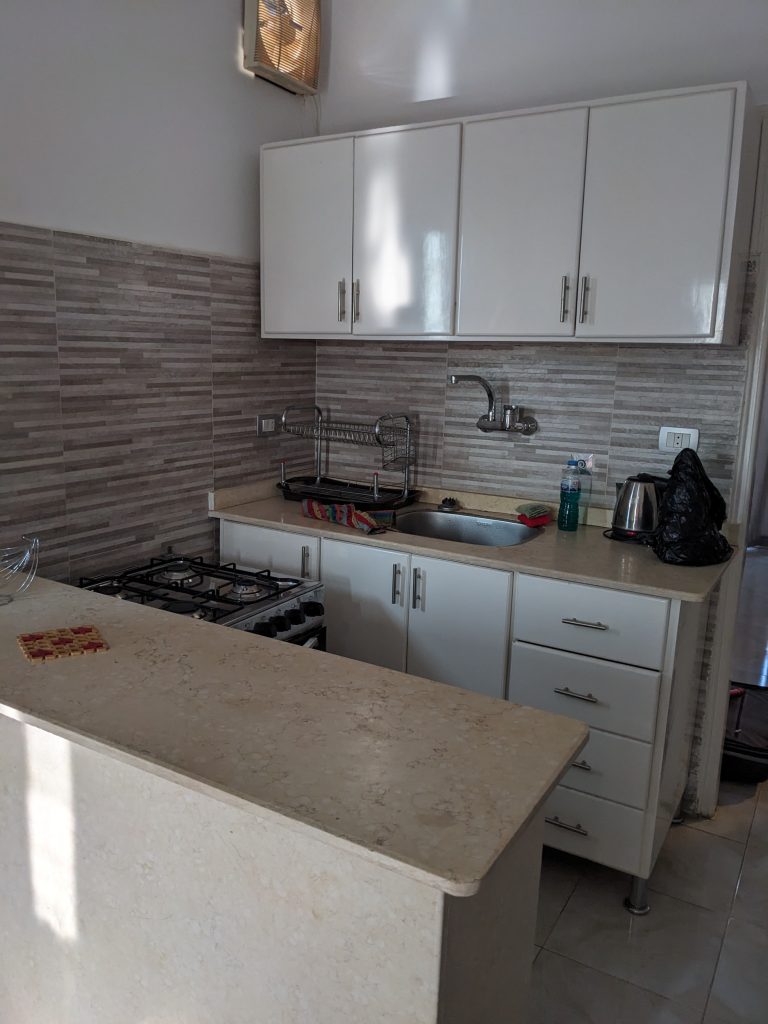



West Bank – Valley of the King, Hatshepsut Temple, Habu Temple and Colossi
One good thing about walking from the ferry to our Airbnb was that we met a man named Hamada who gave us a refreshingly soft sell on driving us to all the West Bank Luxor sights. We took a photo of his contact info and later I exchanged a few WhatsApp messages with him to hire him at his asking price of $15 for 6 hours a couple days after our arrival in Luxor.
Hamada picked us up on schedule at 5:45 so we could be among the first to enter the Valley of the Kings, which is essentially a spread-out cemetery of amazing pharaohs’ tombs. The general entry fee was 400 EGP per person (about $13) to see any three of eight general tombs. You can also pay more to add King Tut’s tomb, Seti I’s tomb, and a couple others. By far the most expensive and most interesting is Seti I’s tomb, which was 1400 EGP per person extra ($45). We decided to go ahead and splurge to add it because we’d read the paintings in the tomb are incredibly well-preserved.
Once we went through the gates, we had to buy yet another ticket (this time only 20 EGP) for the tram to take you up to the tombs (or you can spend time and energy on the long walk; we took the tram). We headed straight for Seti’s tomb, hoping we might have it all to ourselves. We did! We were the first to arrive at the tomb and had ample time to gawk at the amazing paintings and hieroglyphics before we heard any sign of other videos. The only one with us was the tomb guardian, who also pointed out some of the features in the hope of a tip (which we gave, because he really was informative). I don’t have words to describe how cool it was so I’ll let the photos tell the story.


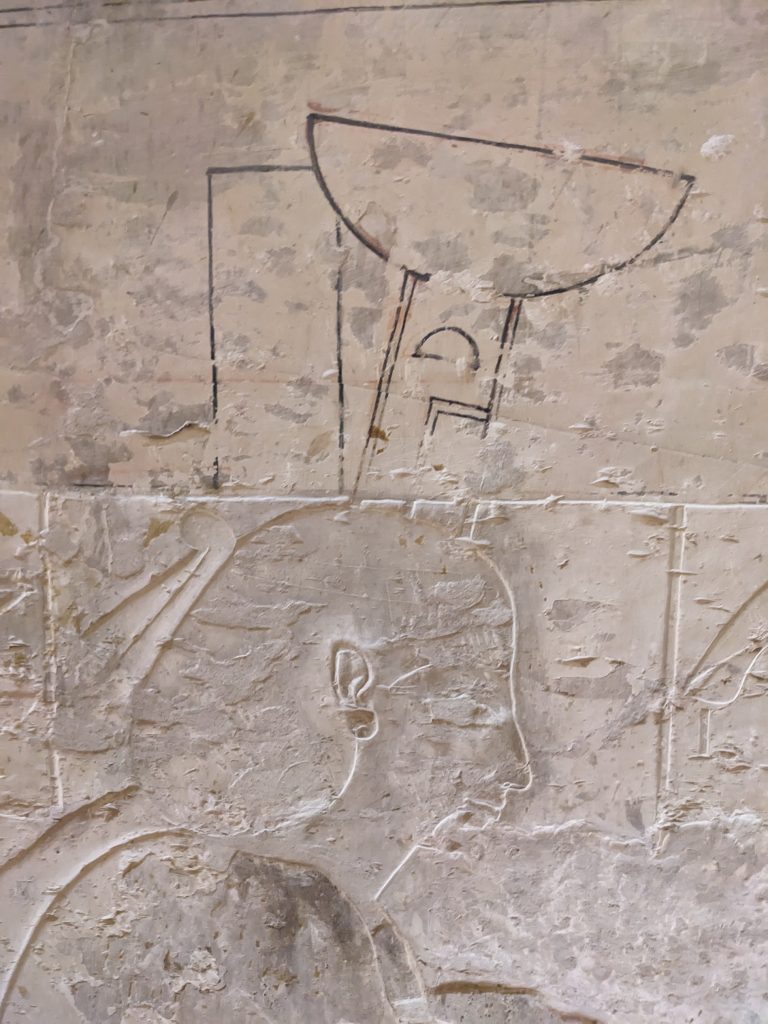
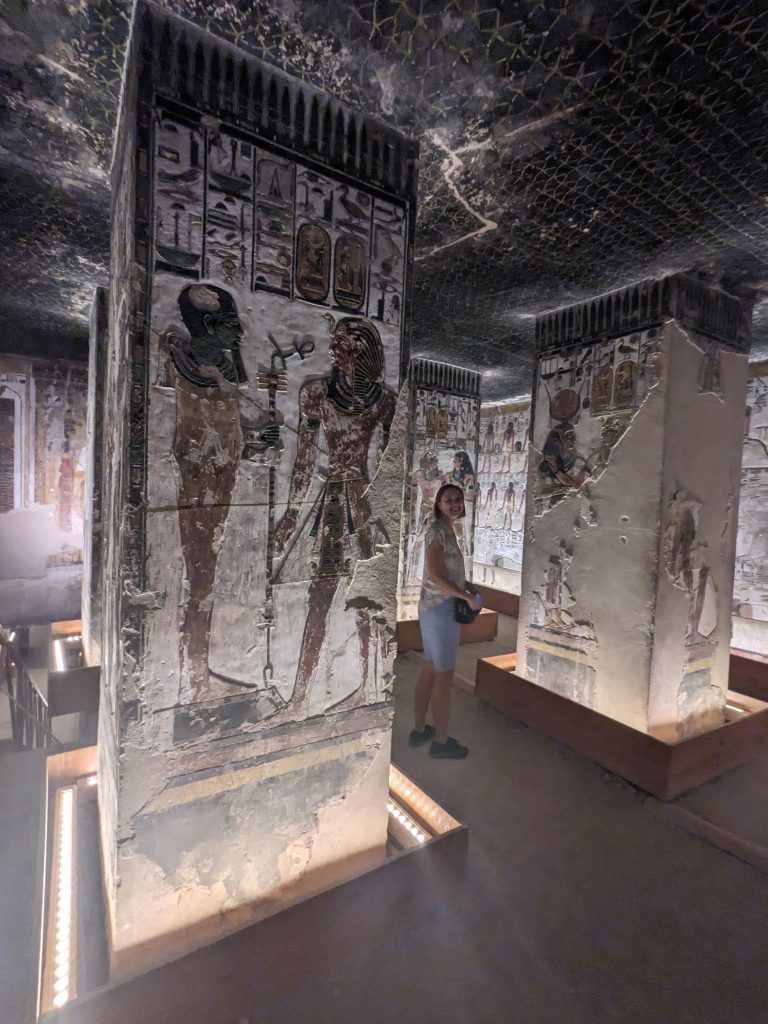
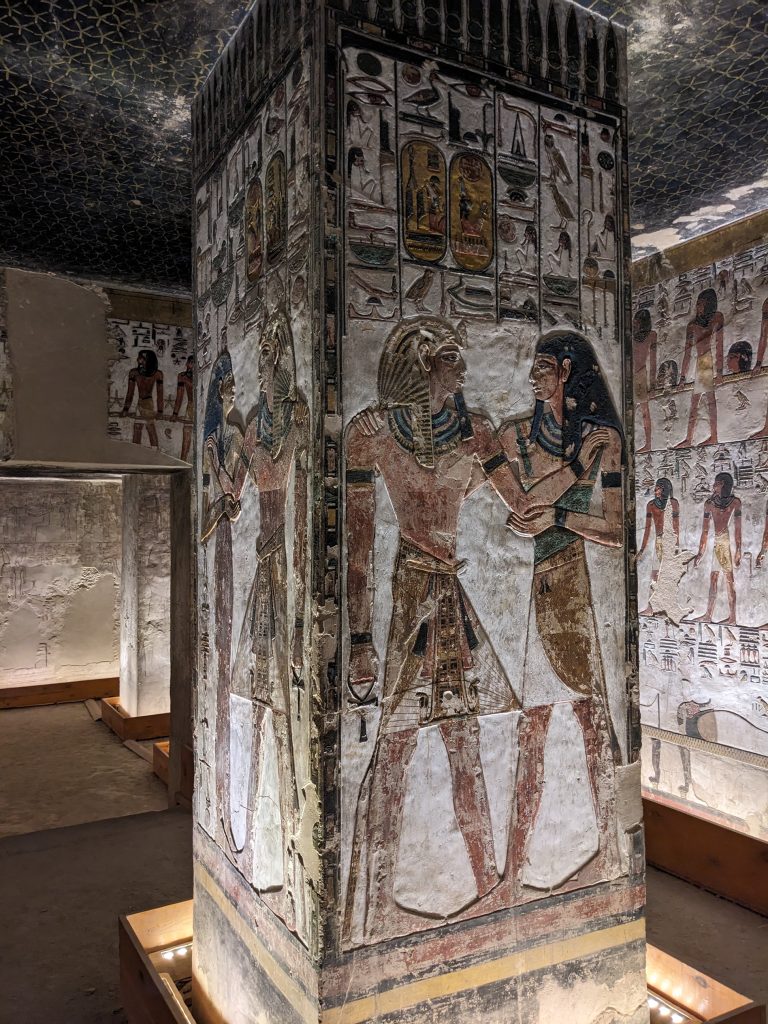

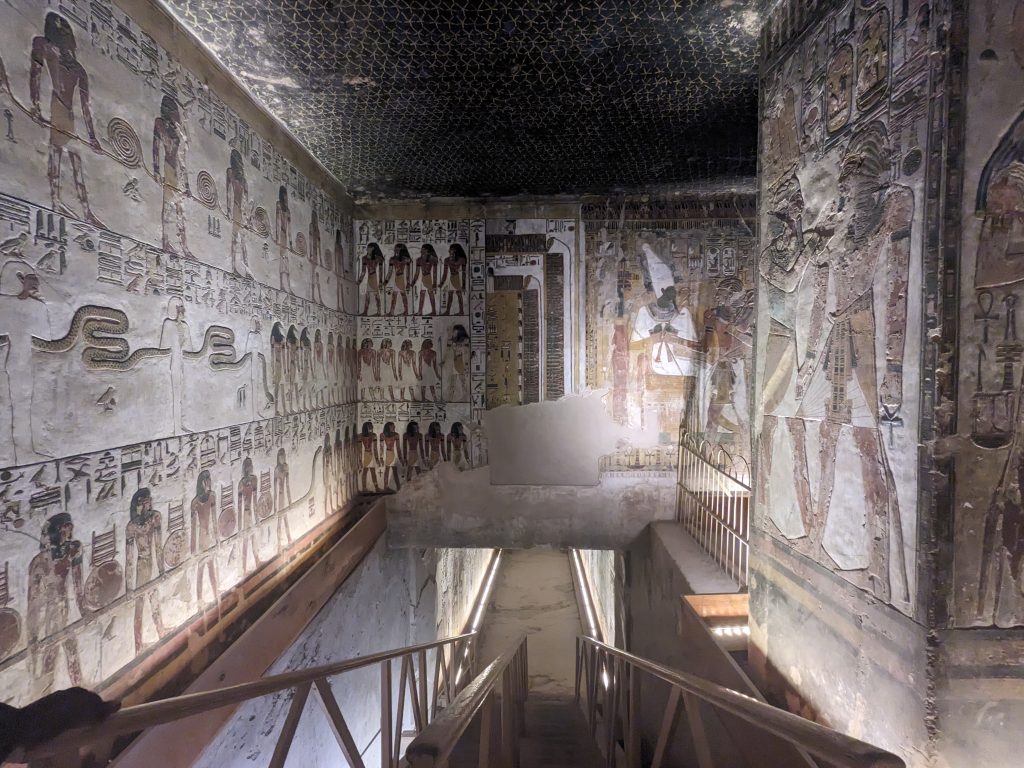


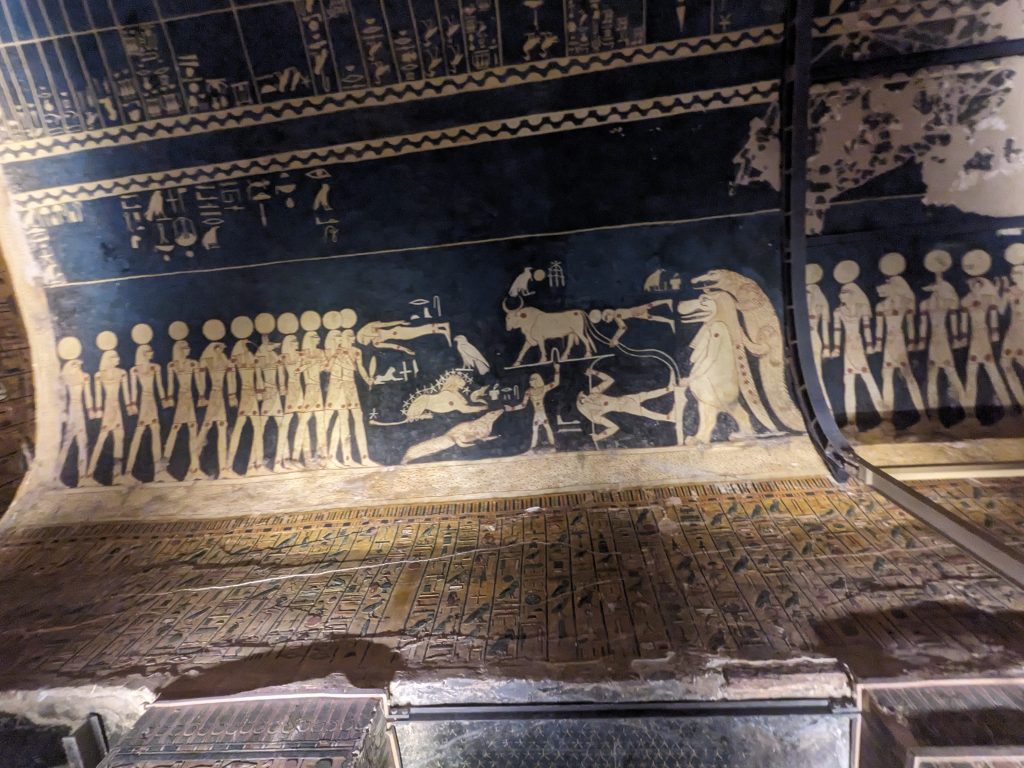



After Seti’s tomb, we sat in the shade to catch our breath and choose our next three tombs from the eight options given. The ticket seller had made one recommendation (and asked for a tip, which we declined) and the guy at the gate another (probably hoping for a tip) but we went to Google to get a sense of what we liked best. I think we chose the right three for us.
First up was Rameses I. It is one of the smallest but has beautiful painted walls in the burial chamber. Also, he was a very important pharaoh, the first of a series of Rameses who built a lot of cool structures during the 19th Dynasty (1292 to 1189 BCE) and after.




Then we went farther back in the complex to the shared tomb of Tausert and Setnakht. We chose it primarily for the story (Tausert was a queen who later ruled as a pharaoh) and because the huge sarcophagus of Setnakht is still in the tomb.
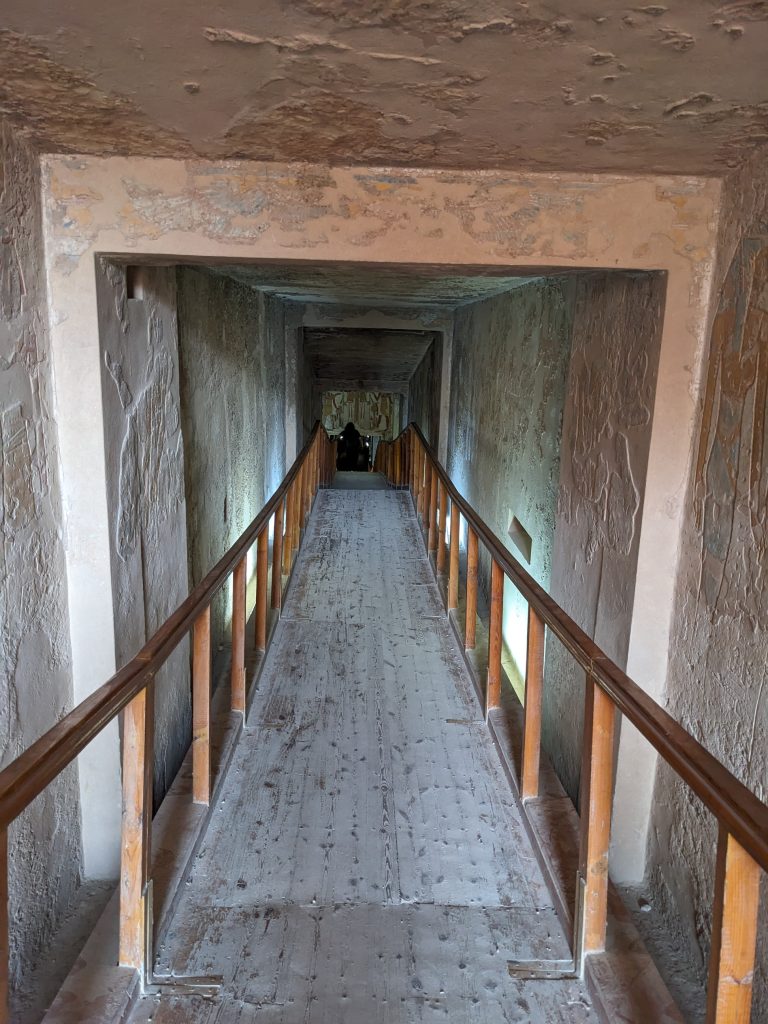
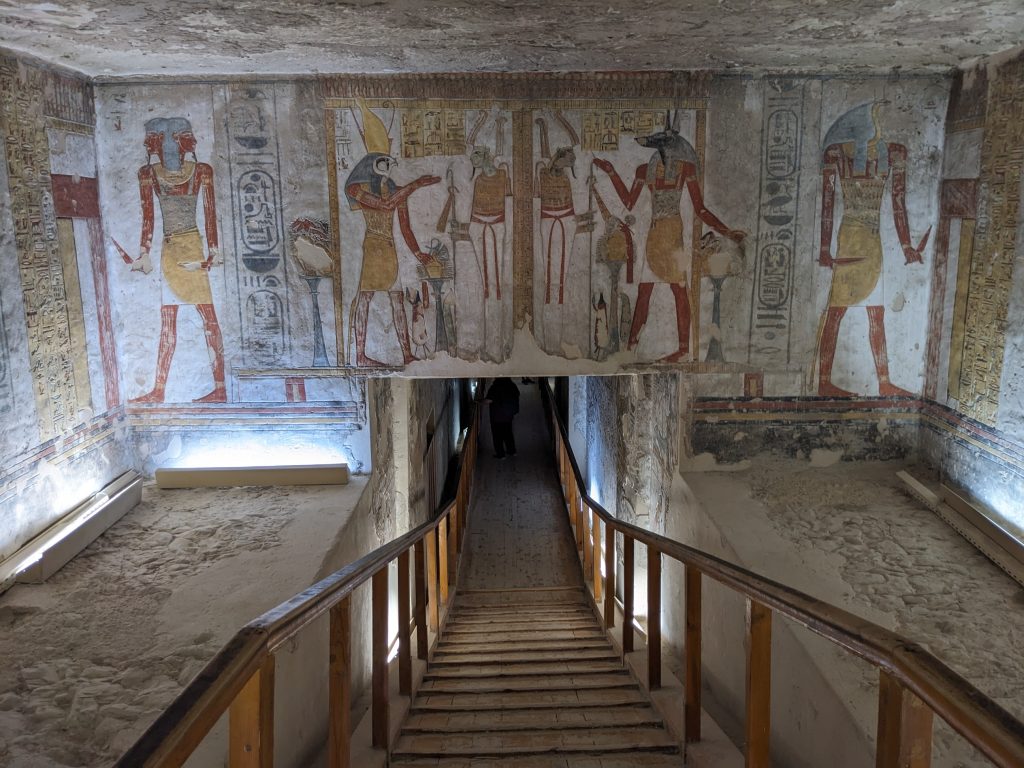



Finally, we visited what may be the most popular in the complex, the tomb of Rameses IV, which is large and very elaborately decorated. It was crowded but very cool and worth stepping into.
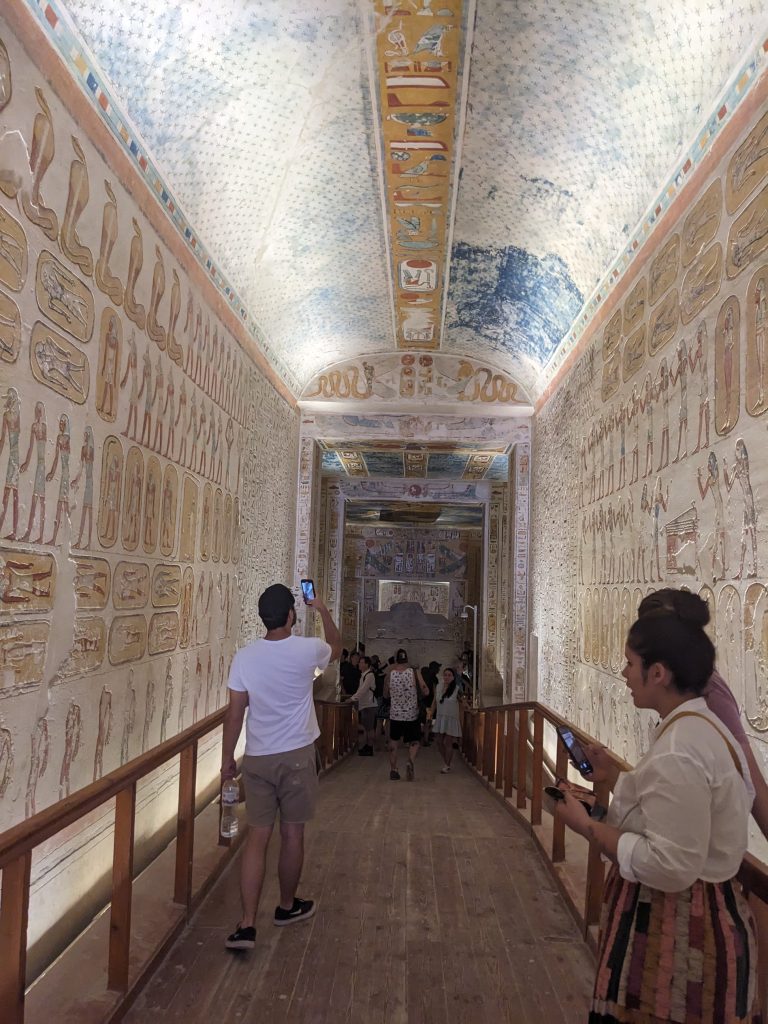
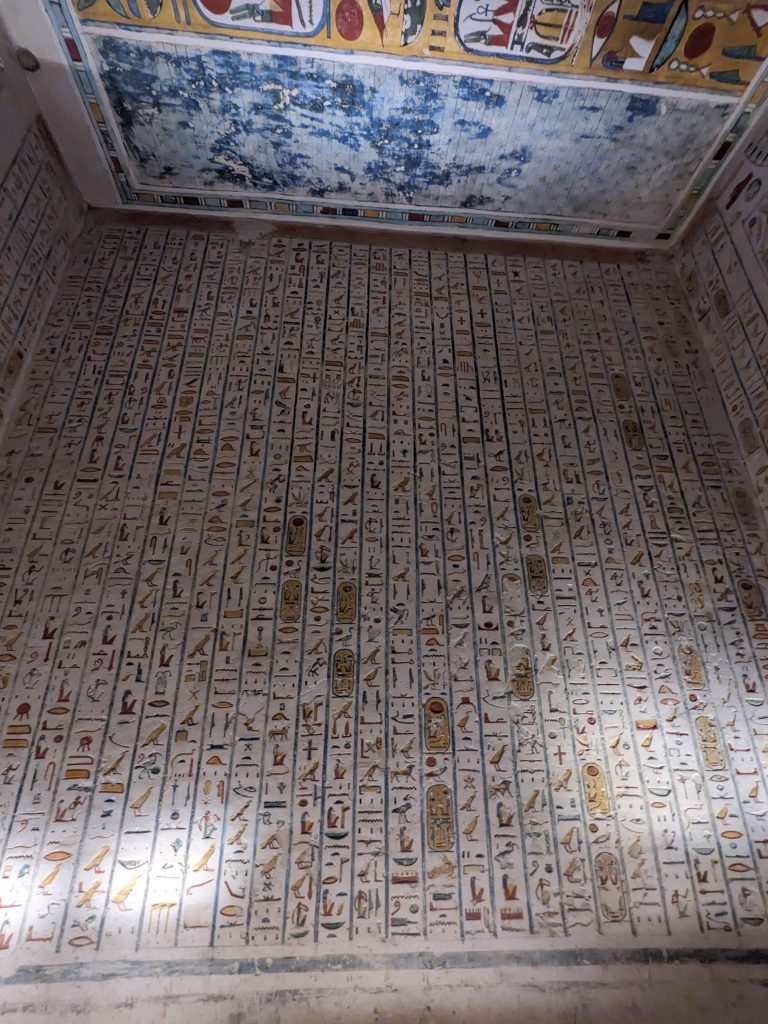


After Valley of the Kings, Hamada lost the large tip I intended to give him by making an unscheduled stop at a tourist trap (or a “family” of “artisan stoneworkers” who “just wanted to offer us tea and tell us about their craft”). When we figured out the ploy, we insisted on being taken to our next planned stop. You have to watch out for those things in Egypt and can’t be too polite to protect your own interests.
Next we went to the Temple of Hatshepsut, another queen-turned-pharaoh. Her temple was very impressive but didn’t have a lot of detail like we’d enjoyed in the tombs. But the cost was pretty reasonable (240 EGP per person or around $8) and it was on all the must-visit lists I reviewed.
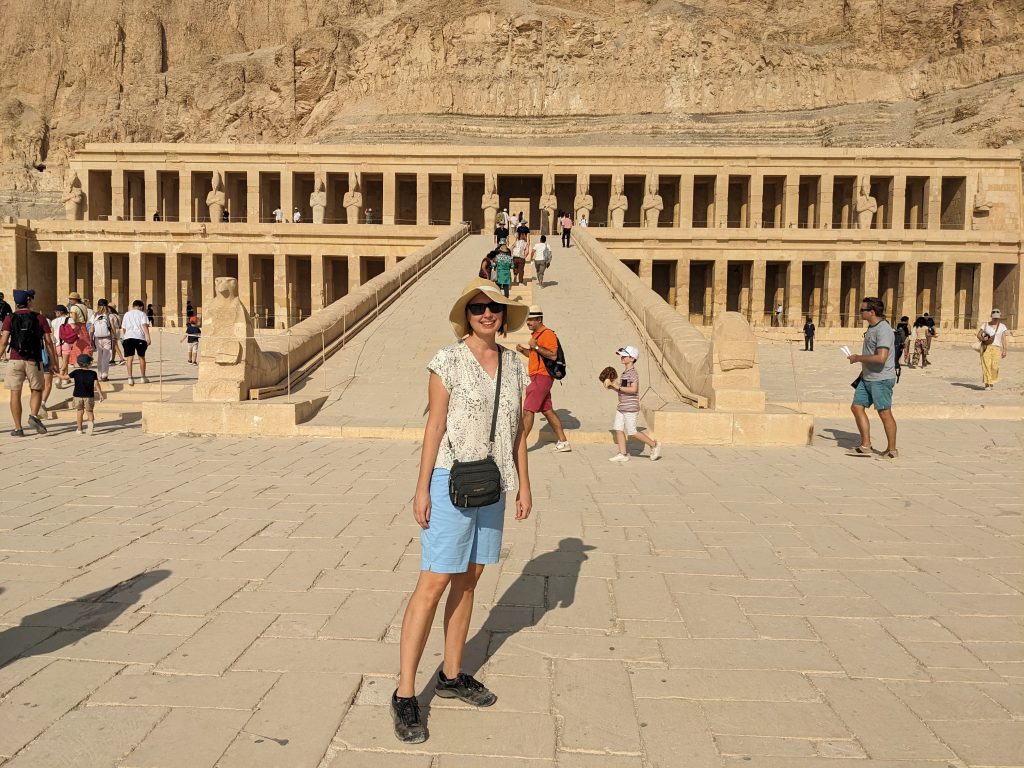


Then we visited Medinet Habu Temple, which we’d learned about from a couple of British tourists we met the prior day when we went out to watch the Liverpool match. This was equally impressive as Hatshepsut but had a lot more detail and layers to it. We were glad to have received this tip because it was unclear if this one was on Hamada’s usual agenda. But he knew exactly how to access it, which involved stopping to buy tickets at a roadside stand a couple kilometers away from it (only 140 EGP each, or $4.50). This is the advantage of having an experienced driver and even with the earlier issue, we were glad we chose to use Hamada.



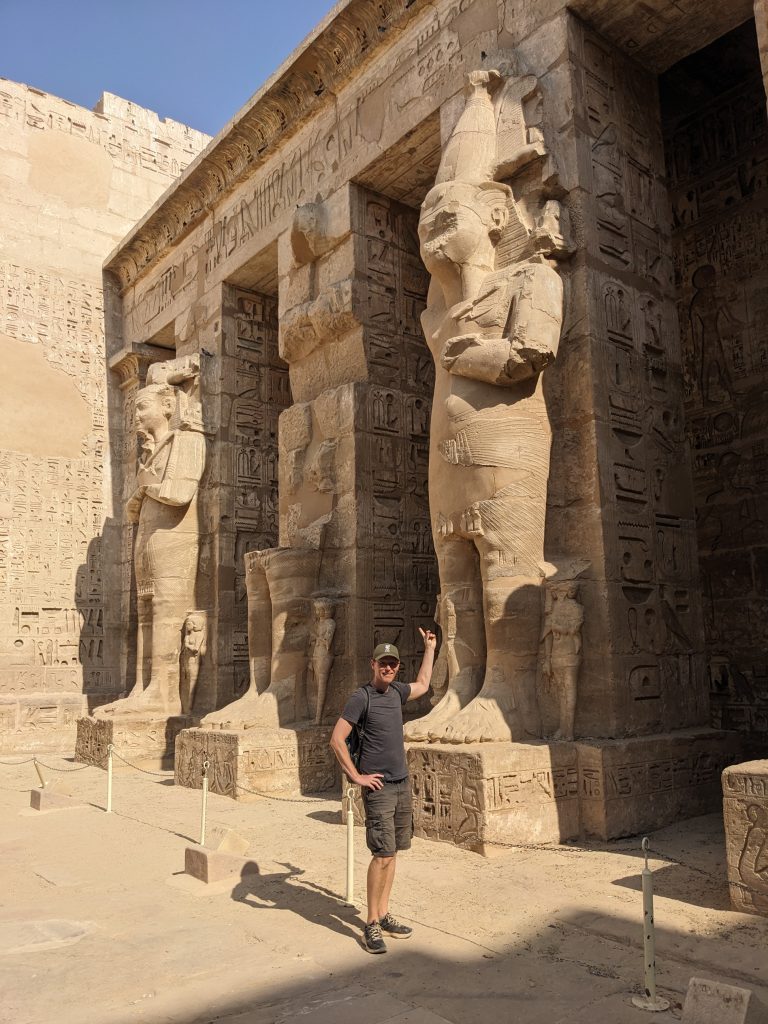


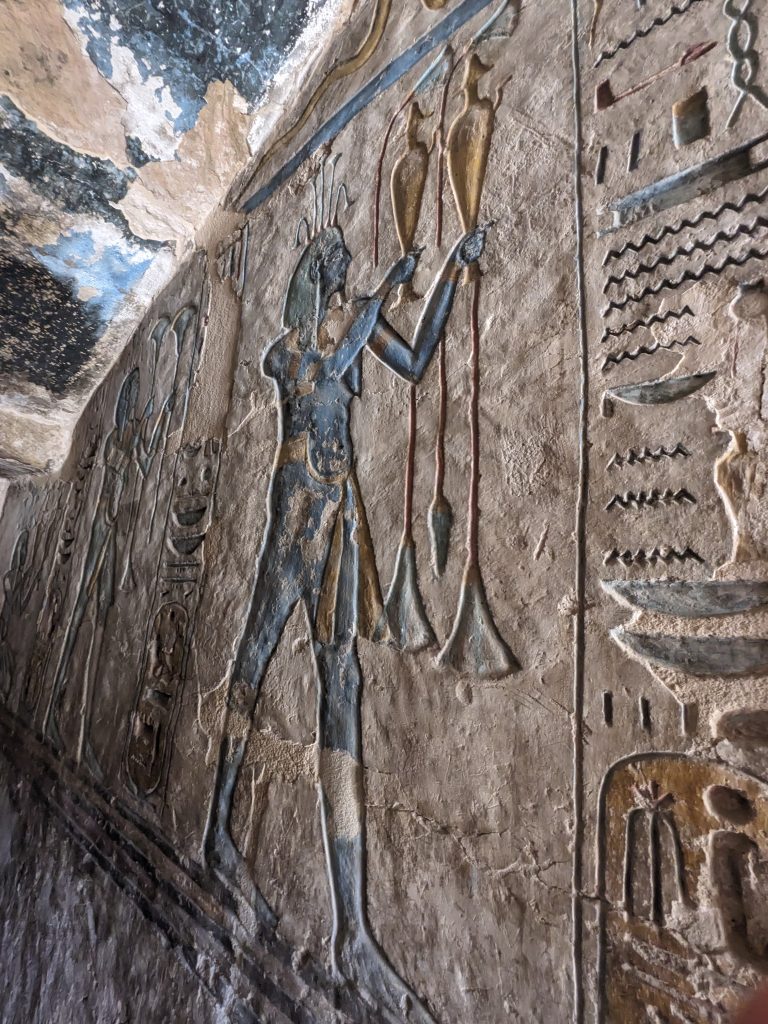


Our final stop was a brief one at the Colossi of Memnon, two massive statues from 1350 BCE. We were pretty touristed out by then, but it was worth seeing them up close and finding the coptic graffiti etched in Greek into one of the legs.
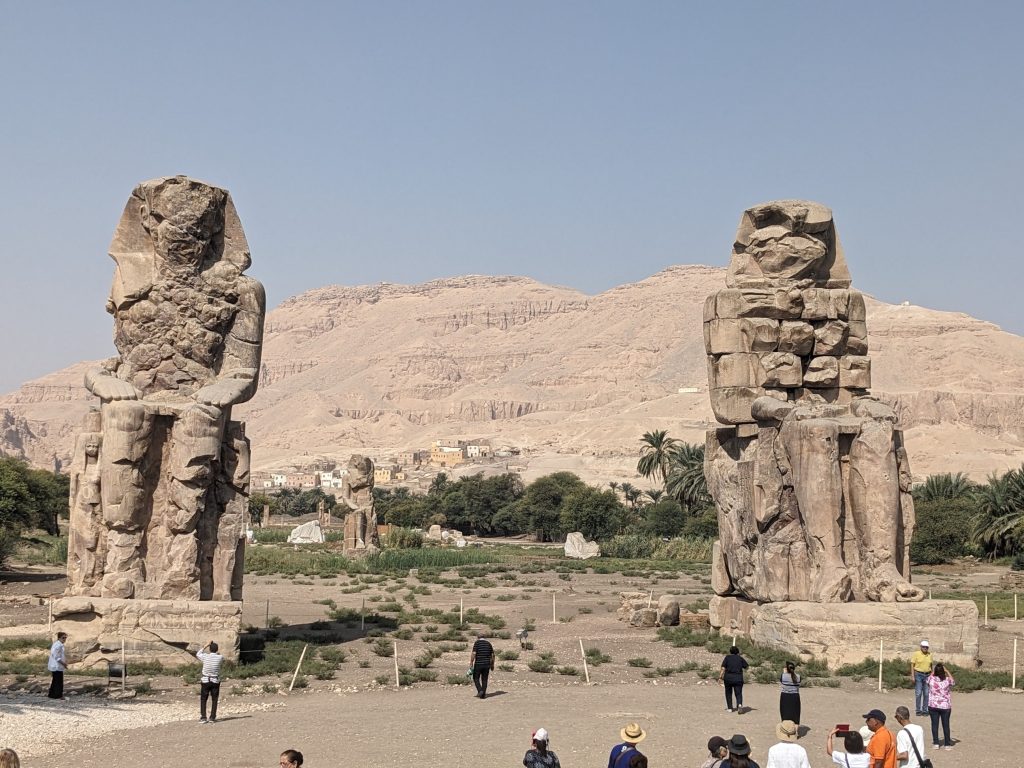
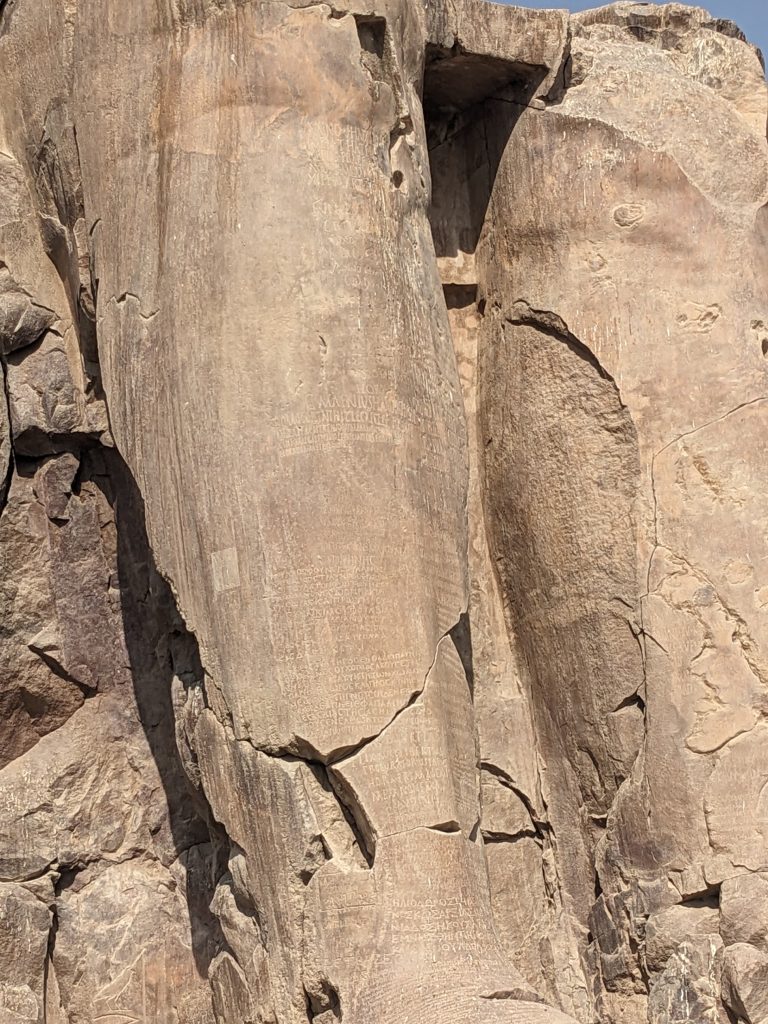
East Bank – Karnak Temple and Luxor Museum
A couple days after our West Bank adventure, it was time to check out the East Bank sights. We arranged with a ferry driver we’d used previously to take us across bright and early at 6 a.m. so we could again be among the first in the door at the Karnak Temple complex, and avoid the heat of the day. The ferry ride over was the perfect way to start our day.
Karnak Temple was beyond amazing and so much more than I had anticipated. It was built over several centuries starting in 2000 BCE with subsequent pharaohs adding more and more to it. It was incredibly cool, especially the Hypostyle Hall, which contains 132 enormous columns. Arriving so early, we had the place mostly to ourselves for the first hour and it took us not quite two hours to see all we wanted to.

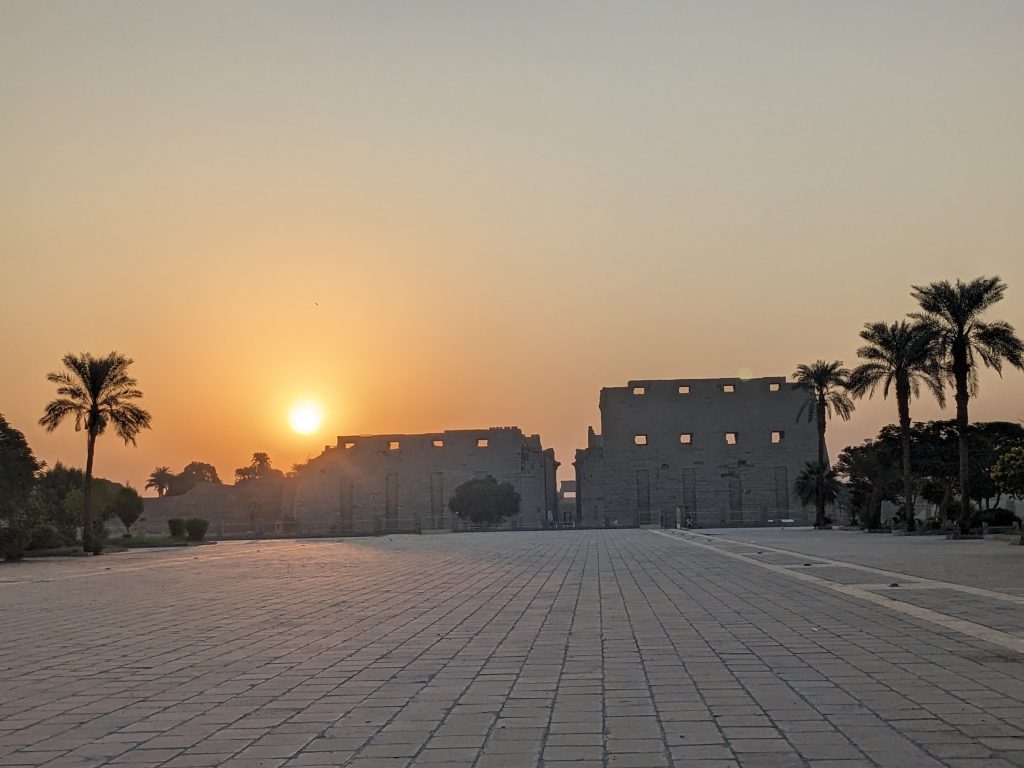

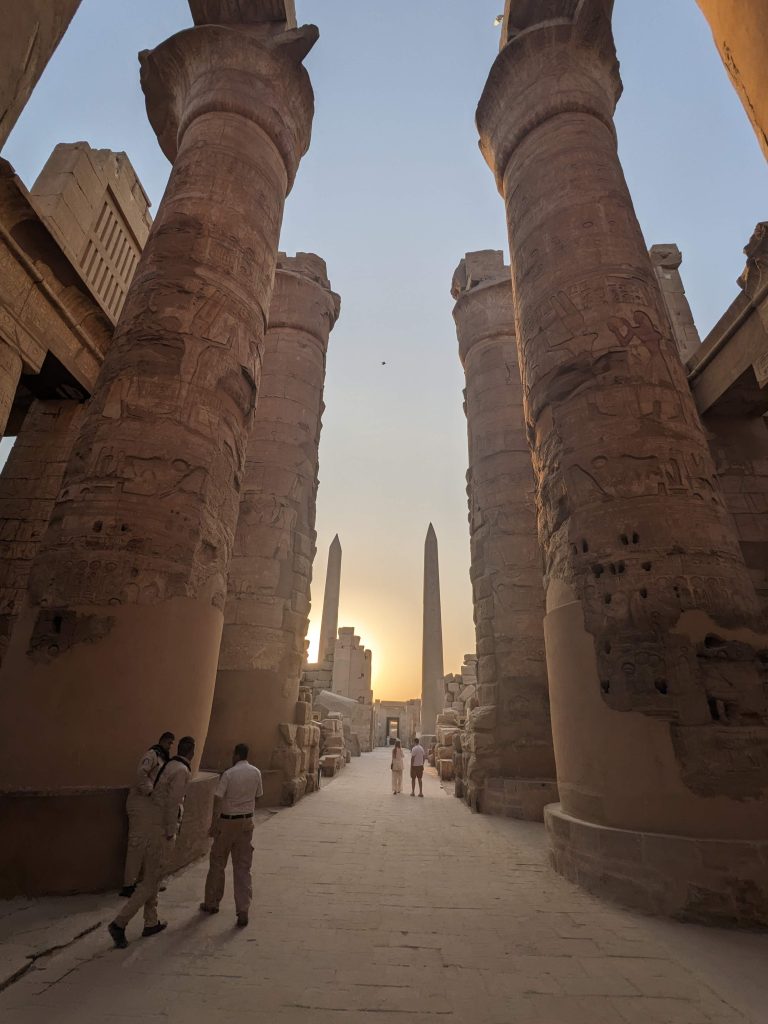
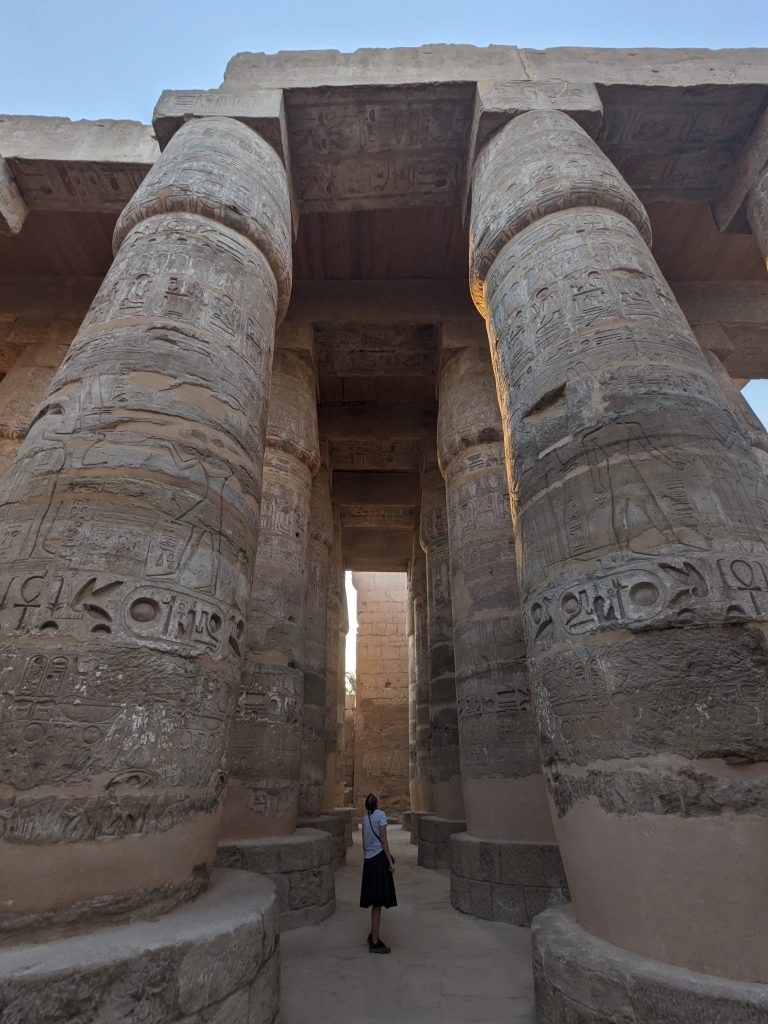
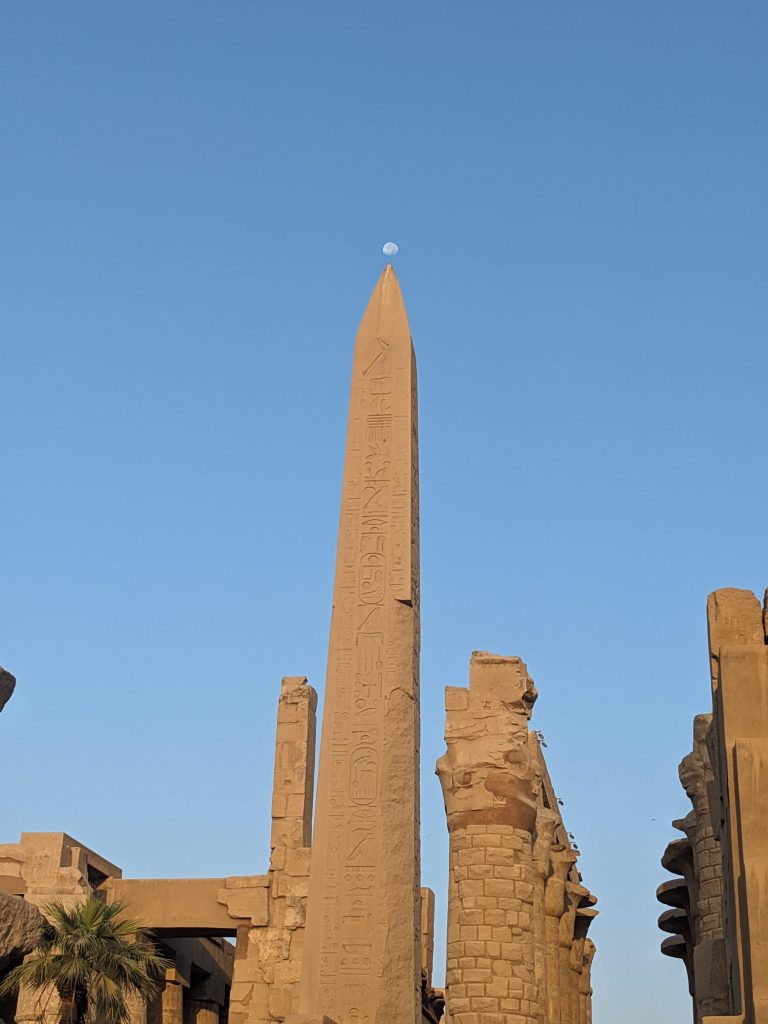




After the temple, we had a little time to spare before the Luxor Museum opened so we stopped at a cafe overlooking the Nile on our way down. It is only a couple of kilometers between the temple and the museum, so it is very walkable. It was nice to get off our feet awhile and enjoy a lemon mint juice for me and a cappuccino for Chad.
We were very impressed by the Luxor Museum – it was just the right size, had some amazing artifacts, and was very well-labeled in English and Arabic. It was especially seeing some of the artifacts from Karnak Temple since we’d just been there. We spent a little over an hour at the museum, which was just right. We ended the day with a couple of errands and lunch at a great little East Bank restaurant called Oasis Palace.



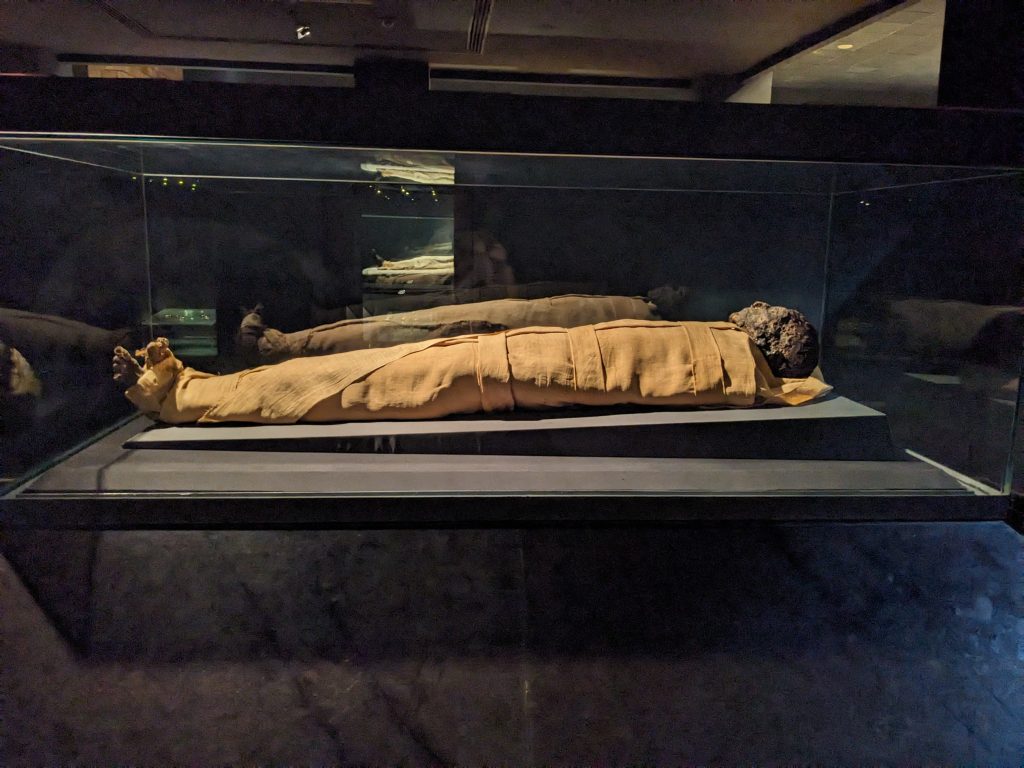
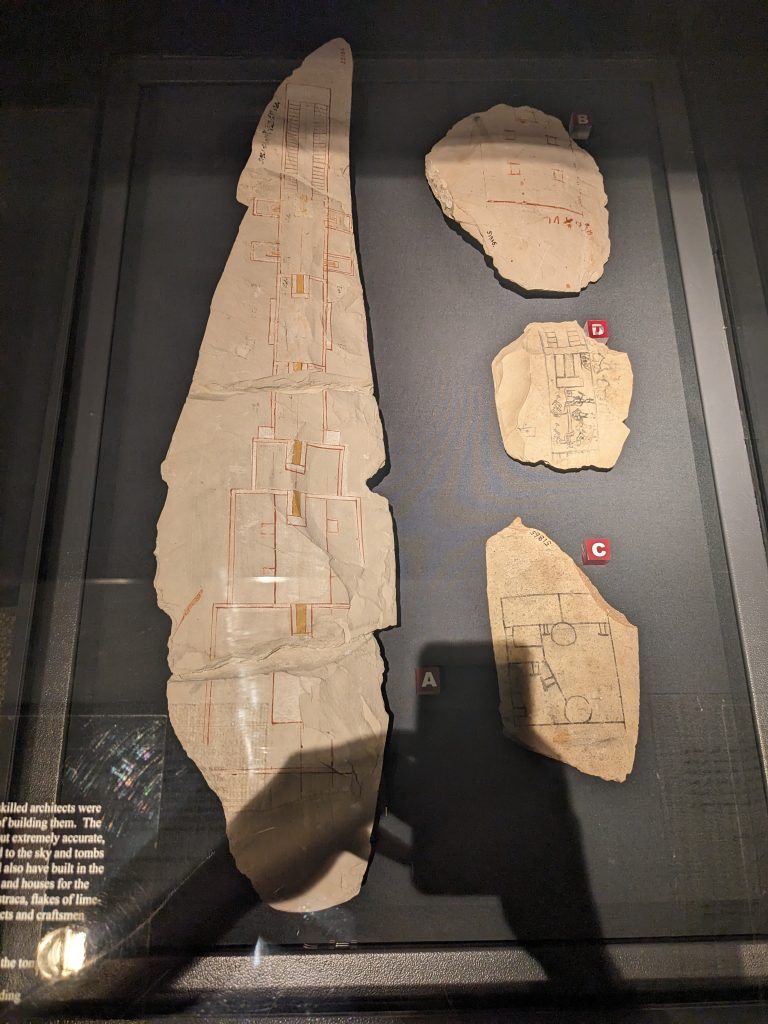


Life in Luxor
As I mentioned, our Airbnb ended up having quite a lot of challenges. They’re described in my review below. Another challenge was our West Bank location itself. There was only a small grocery store that was pretty dusty and didn’t have a lot of selection and no fresh produce, though the proprietor was quite helpful and friendly. We didn’t find the green grocer until a few days into our stay, once we did it helped a lot. Otherwise, we had to trek over to the East Bank via the ferry to get groceries (from a more modern store, but still pretty small and sans produce).
However, there were some advantages to the West Bank. It was much quieter than the east side and the dirt roads were perfect for Chad’s runs. He enjoyed them so much that one day he suggested I rent a bicycle so I could join him and see the little villages and fields he’d been running through. It was an interesting excursion (though I’m not much of a cyclist). And we found a phenomenal vegetarian restaurant and art gallery that we ate at twice called Wannas Art Cafe. The food was great and they had a puppy we could play with. Of course, like the rest of the West Bank (including our Airbnb), they were subjected to the daily government-imposed power outage from 6 to 8 p.m. But they were always prepared with lots of candles and it was actually quite pleasant.
But Luxor was where we really started feeling the press of the “touts,” Egyptian men trying to solicit business (usually taxi, ferry, boat ride, or tour) in a very persistent, sometimes aggressive, manner. It was quite exhausting and pretty unpleasant (though probably much less pleasant for them to have to rely on such tactics to make a living). By the time our week in Luxor ended, we were really ready to move on.
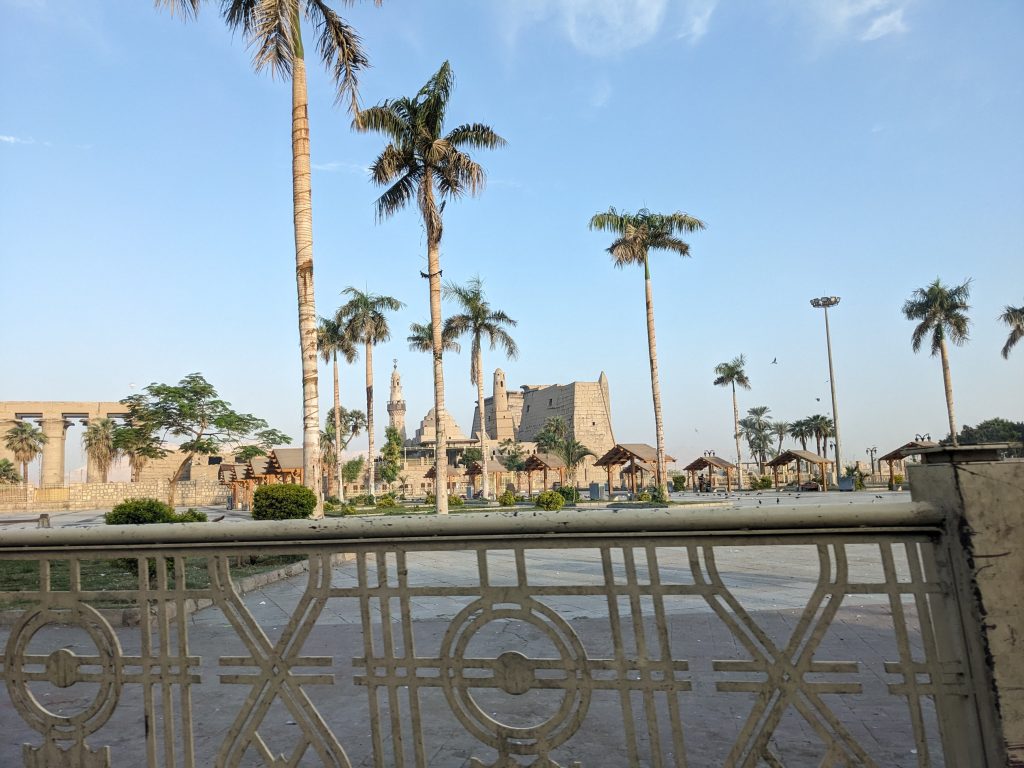
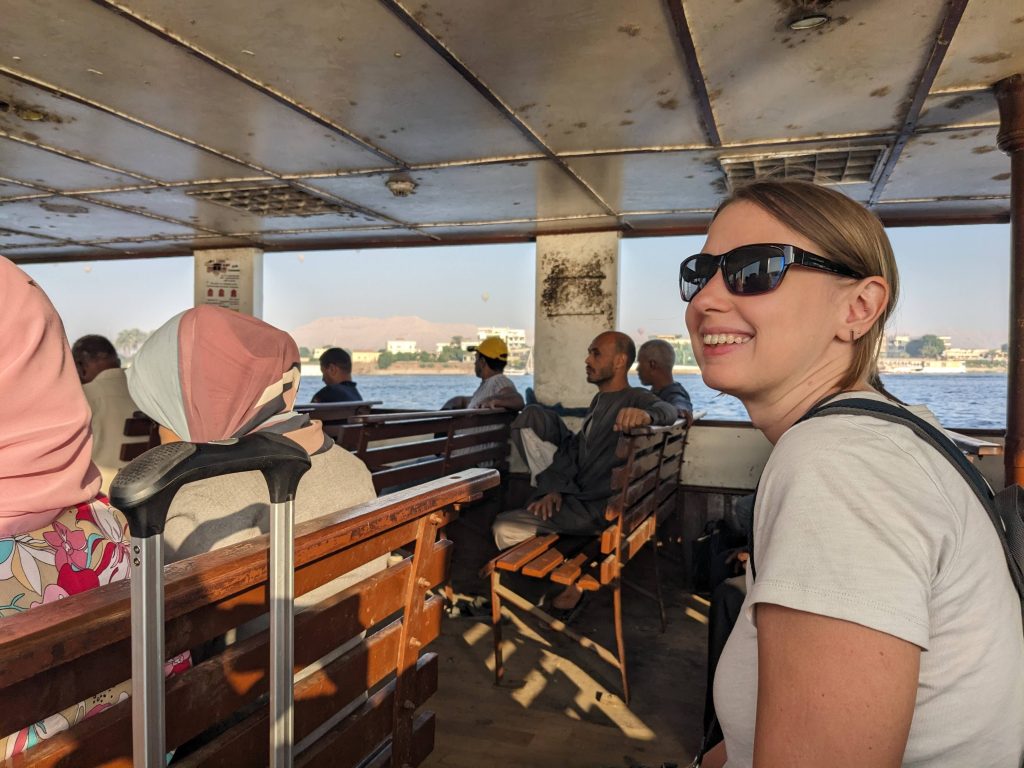


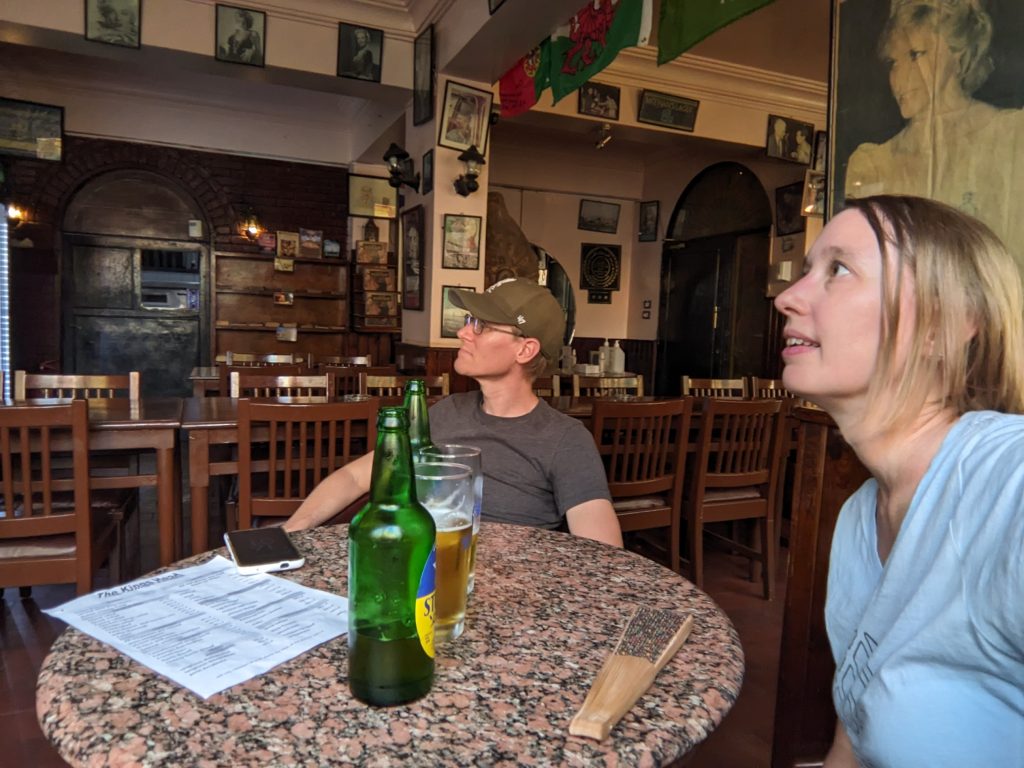
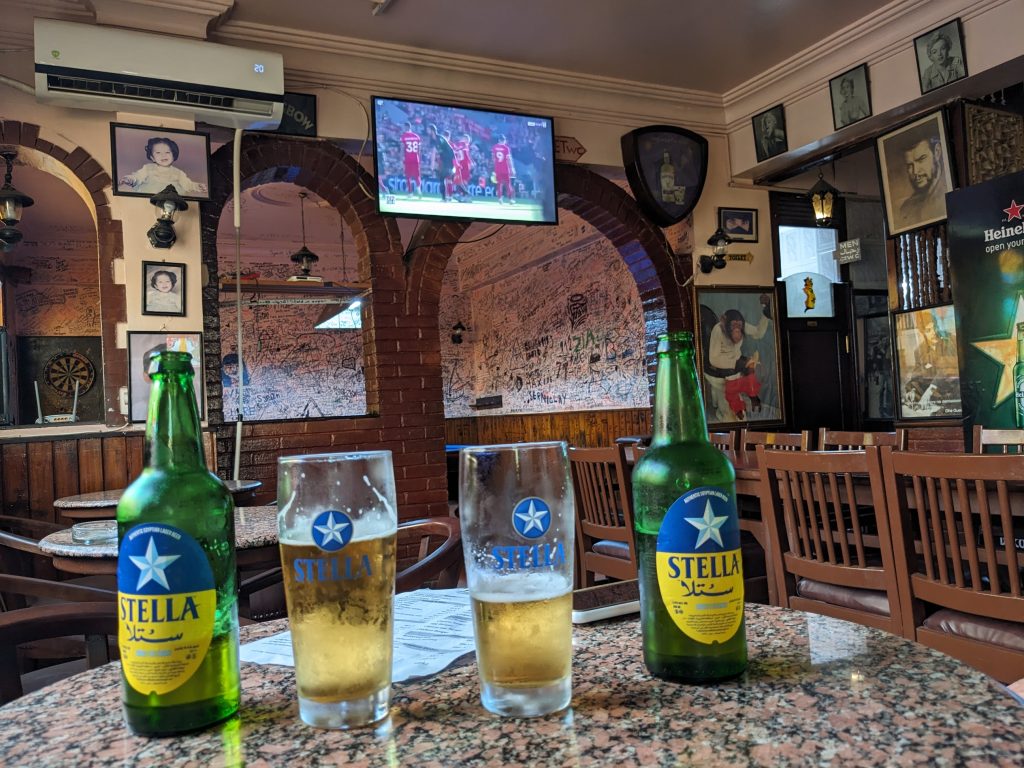

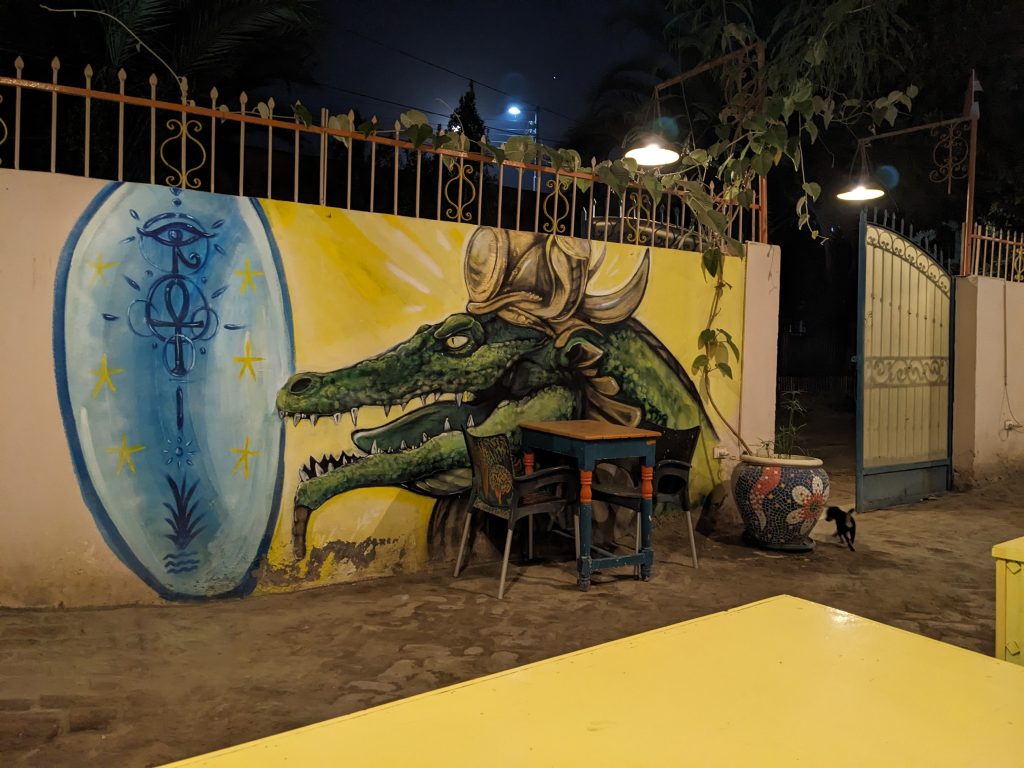


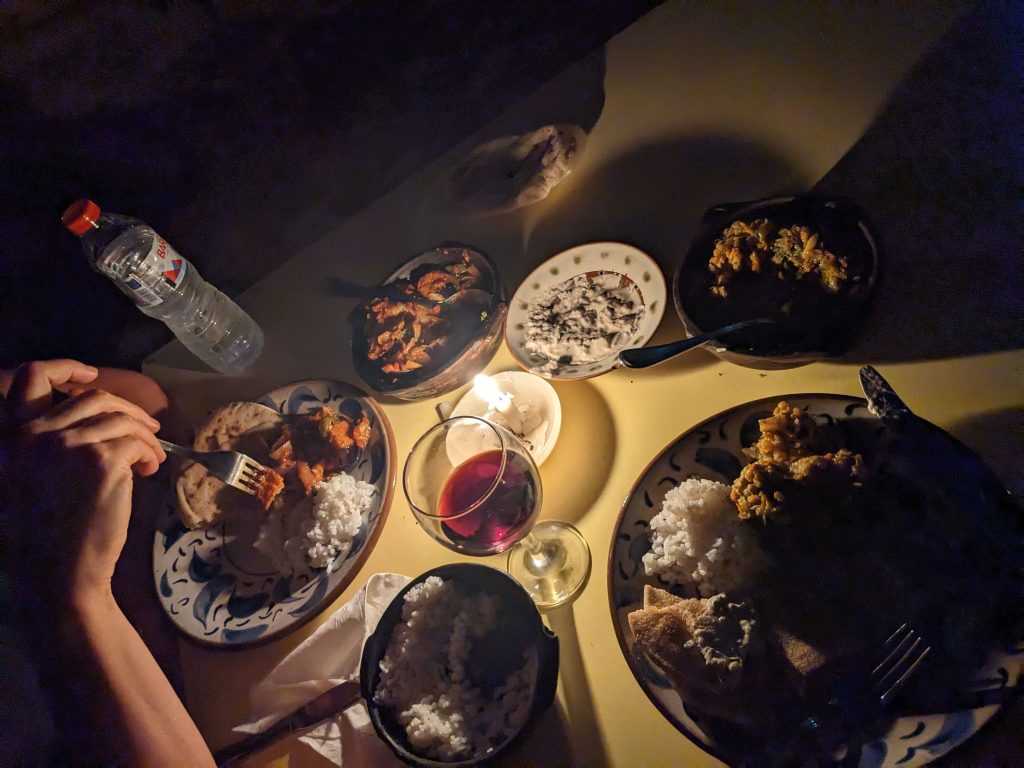

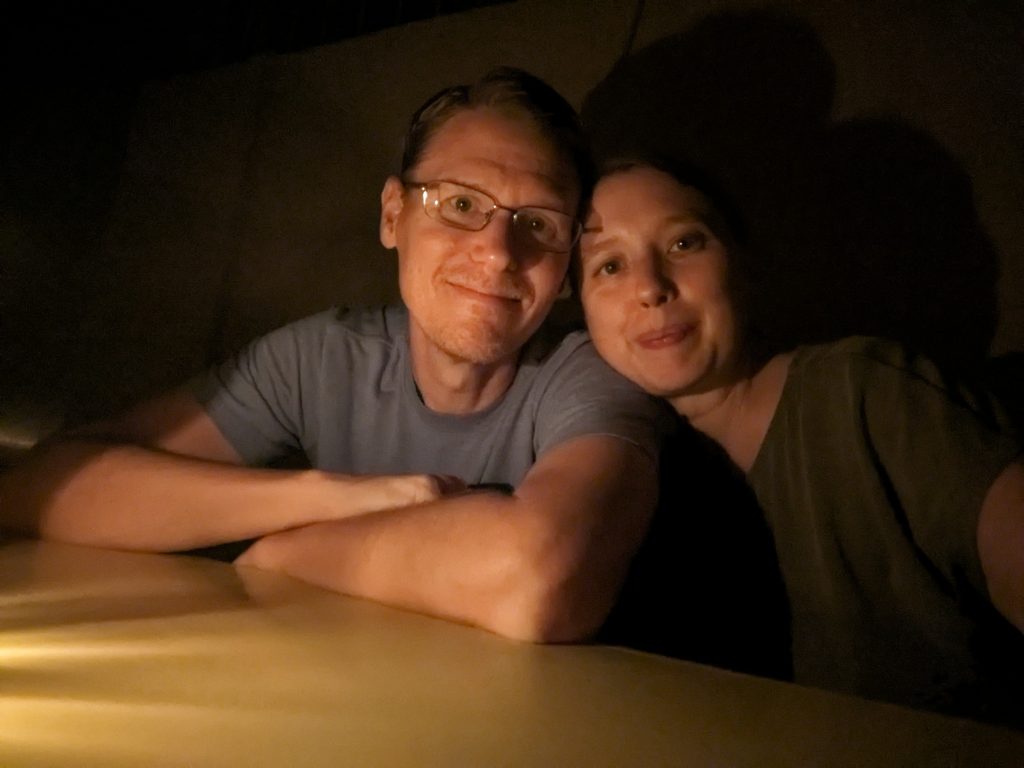
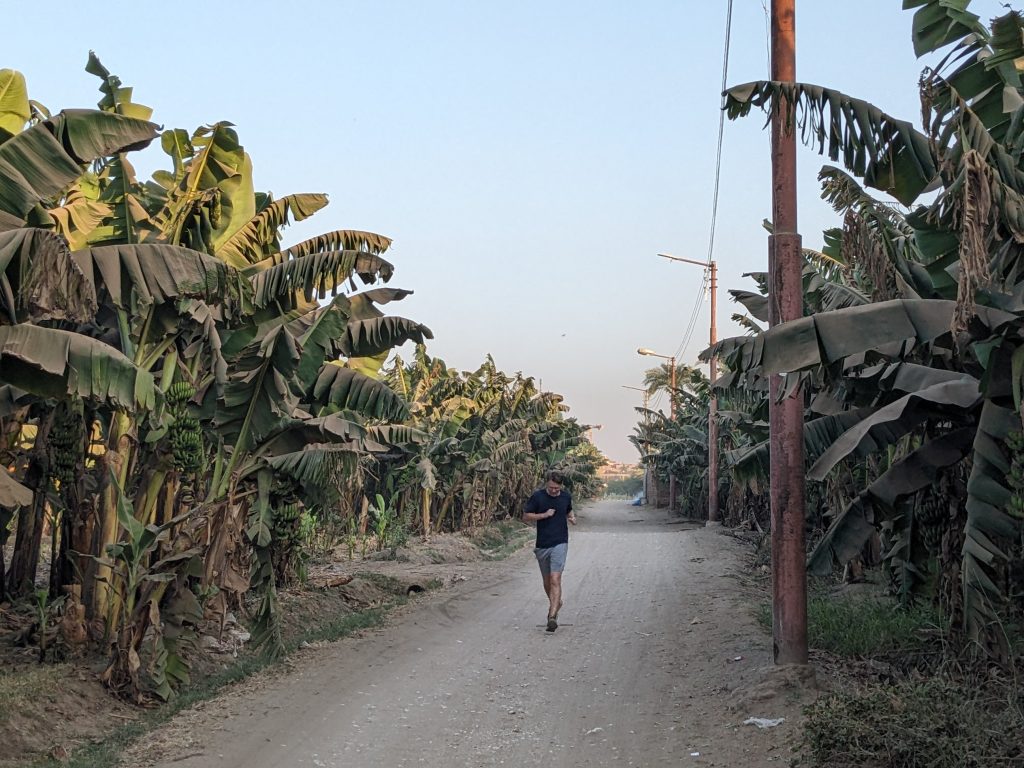
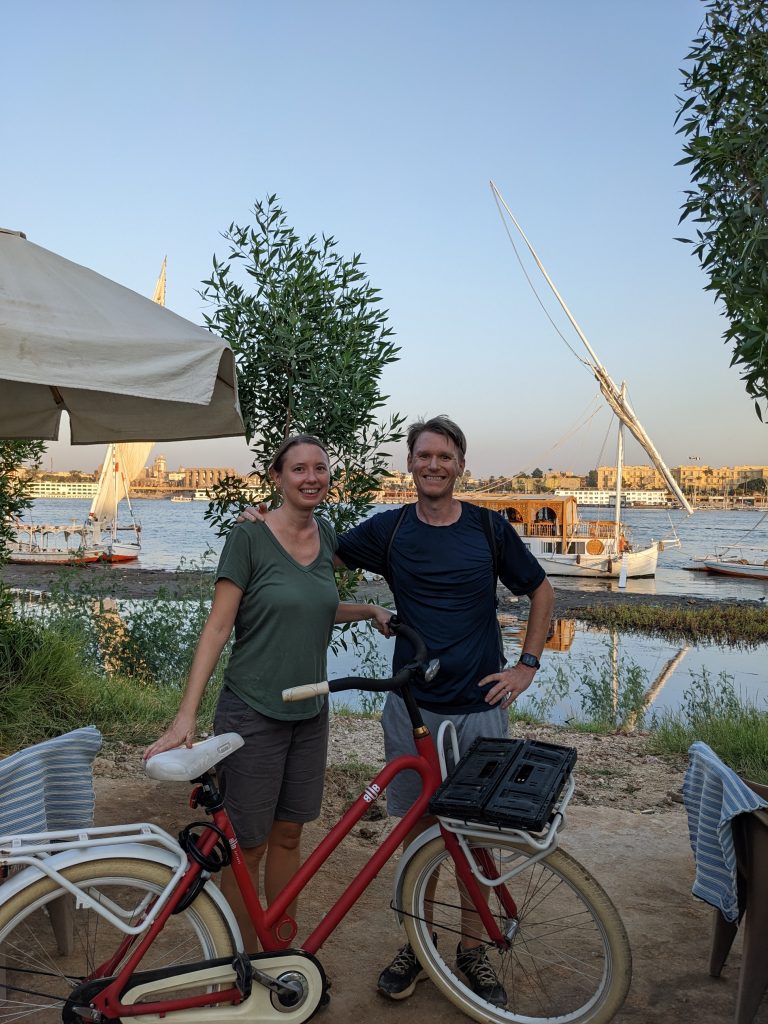


Summary
Though a week in Luxor was far too long, it held the most spectacular sites we saw in Egypt, the tomb of Seti I and Karnak Temple. I wouldn’t trade those experiences for anything, so I’m very glad we went.
Airbnb Review – We liked the layout of the apartment and the AC worked well in the bedroom and living room. The kitchen was equipped enough for basic cooking and everything was clean. Good hot water in the shower but there’s no separation with the rest of the bathroom floor (but it dries fast). We loved the views from the balconies and rooftop terrace. I wish Osama had told us about the daily power outage from 6 to 8 p.m. The pool was broken for several days so the water was quite cloudy. During that time we had bad water pressure in the apartment and sometimes no water, including for one full day. Once it was finally fixed the water pressure was fine for our last couple of days. The wifi generally worked okay and was fast enough for streaming and video calls. One morning the wifi didn’t work at all because the account was unpaid. It took about half a day to get it back up again. Not all the problems were the host’s fault but because there were several, we wouldn’t choose to stay here again.